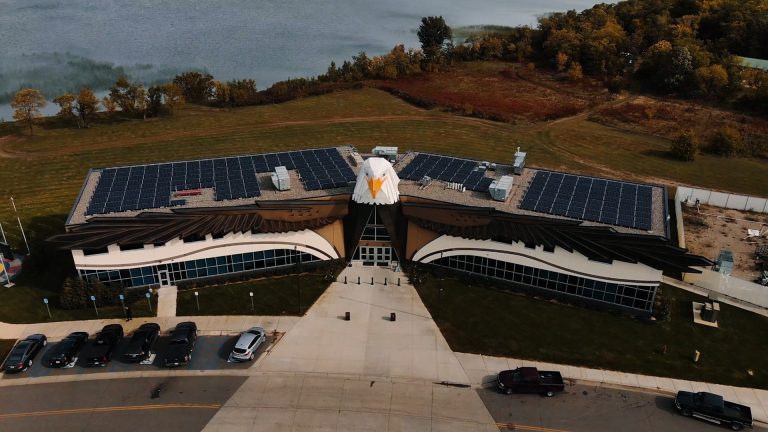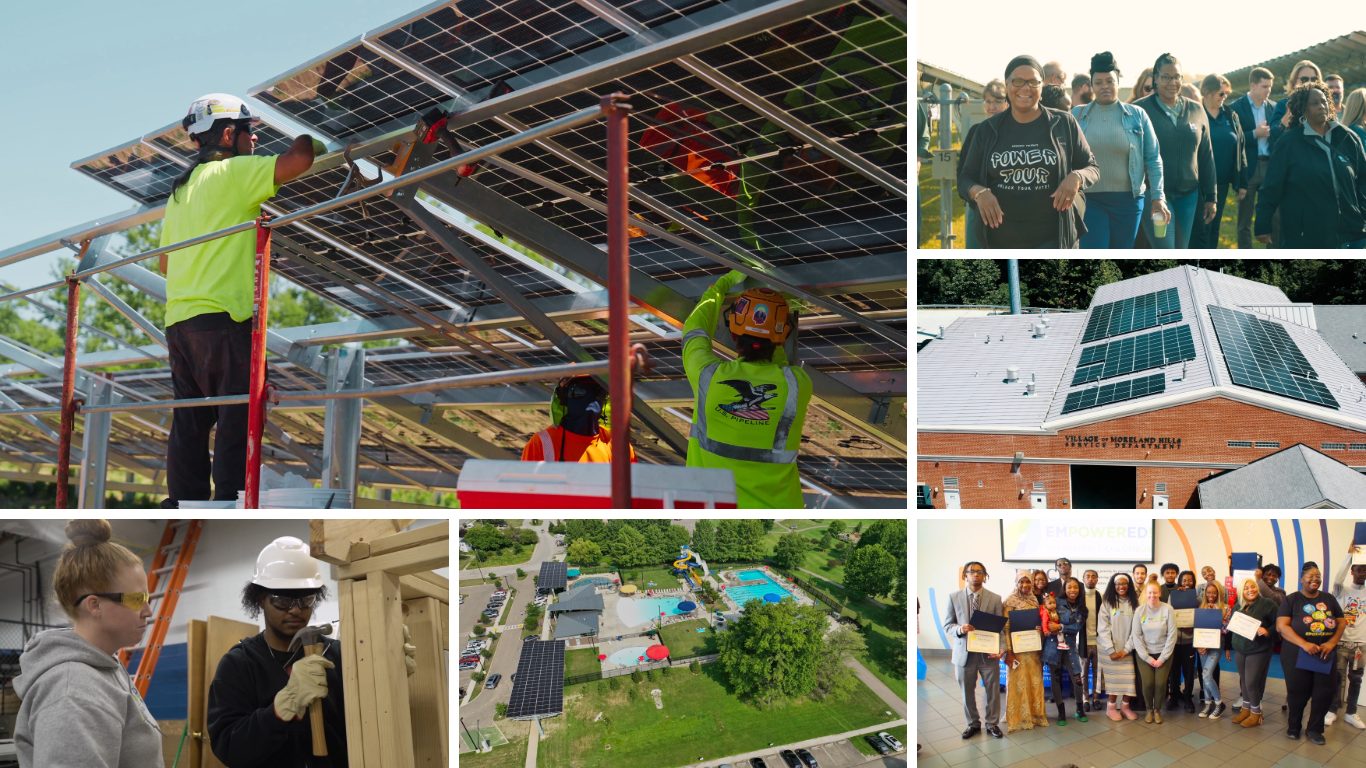
Category:Impact Story9 min read
Category:Impact Story9 min read
Across Ohio, cities and towns are taking the lead in shaping a cleaner, stronger future. Mayors and other local leaders from rural, suburban, and urban communities are proving that investing in clean energy isn’t just good for the environment—it’s smart economics.
That’s the driving idea behind Power A Clean Future Ohio (PCFO), a group helping communities work together to reduce pollution, grow local jobs, and build resilience for the long term.
“Power A Clean Future Ohio represents 50 communities all across our state, from small villages up to our largest cities and counties, and everywhere in between. It represents rural and conservative suburban communities, communities led by Republicans and Democrats alike,” said executive director Joe Flarida. “They have seen the opportunity that the clean energy economy presents for their residents and for their workers, and they know it’s smart to invest.”
Video by Data-Driven Narratives.
PCFO was born out of frustration—and hope. In 2019, Ohio saw one of the biggest corruption scandals in its history when $60 million in bribes helped pass House Bill 6, a bill that bailed out coal and nuclear plants while rolling back renewable energy and efficiency programs.
Instead of giving up, local advocates and mayors across Ohio came together and said: We can do better. That same year, they launched Power A Clean Future Ohio with a simple mission—empower local governments to take control of their energy future.
Five years later, that mission has grown into a statewide movement. PCFO now represents over 50 communities, from rural towns and counties to large urban centers like Columbus, Dayton, and Toledo.
Ohio’s mayors are showing that clean energy works for everyone.
Mayor Aftab Pureval of Cincinnati puts it simply: “When you’re a local leader, you can’t spin, you can’t obfuscate. You have to lead… That’s why cities are really the perfect venue for climate action. Because we are big enough to have a really big impact on the issue, but we’re small enough in order to be nimble and flexible and address the ever-changing landscape.”
In Toledo, Mayor Wade Kapszukiewicz says embracing clean technology is part of the city’s industrial DNA. “We’re still going to create jobs, we’re still going to win those awards for economic development,” he says, “but we’re going to be doing it with an eye toward sustainability.”
For Dayton Mayor Jeffrey J. Mims, Jr., collaboration is key, rather than going it alone: “It makes a whole lot more sense to collaborate with other cities,” he points out, “to move us more quickly to trying to be more of a sustainable city, more of a sustainable state.”
And in Lebanon, Mayor Mark Messer points out a direct benefit to residents: “One of the main benefits with solar is that we’re able to take all of our rate savings and pass them directly on to our rate payers.”

PCFO’s success lies in its practical, community-first approach. Every city’s needs are different, so the organization helps local governments create plans that are achievable, measurable, and affordable. They connect cities with technical assistance, funding opportunities, and peer networks—so that progress isn’t limited to political party or geography.
“These efforts unite people because they deliver tangible benefits: lower energy costs, healthier neighborhoods, and new opportunities for small businesses,” said Michael Roberts, senior program officer for McKnight’s Midwest Climate & Energy program. “Power a Clean Future Ohio shows what’s possible when communities come together around shared values of economic vitality and local resilience so their residents have a direct stake in building a more prosperous future. When we invest in clean energy locally, we invest in the economic and civic strength of Ohio.”
According to PCFO’s Executive Director, Joe Flarida, even when there are barriers at the state or federal level, local leaders are proving that Ohio can keep moving forward. “This work continues because it matters to Ohioans—they want clean air, good jobs, and a healthy future.”
Clean energy isn’t just about cutting pollution—it’s a growing economic powerhouse. In 2024, clean energy and clean vehicle jobs in Ohio reached more than 121,000, growing much faster than the state’s overall economy.
Those jobs are in everything from installing solar panels, wind turbines, and heat pumps to manufacturing electric vehicles and efficient appliances. They’re helping to keep young workers in the state and making communities more competitive for new business investment.
On top of economic benefits, local clean energy projects are making Ohio healthier. Cities, towns and counties are working on community-driven projects that reduce pollution while improving quality of life—especially for those most affected by unhealthy air and rising energy costs. From electric vehicle programs to energy waste reduction and from renewable electricity to sustainable land use, PCFO supports projects that create cleaner air, lower bills, and create safer neighborhoods for all Ohioans.
While state and federal politics can be divisive, PCFO shows that clean energy can unite communities. Local leaders of all political stripes agree that investing in clean power makes sense for jobs, for public health, and for the next generation.
As Columbus Mayor Andrew Ginther puts it, “We know that Ohio’s economy runs through Ohio cities, so the impact that mayors and local leaders can have in fighting climate change and building more resilient communities—the power’s in our hands, we just have to take it.”
PCFO’s growing network of communities is living proof that real progress doesn’t always start at the top—it starts at home, with leaders willing to act. “We are inspired by the ever-growing momentum of local leaders in Ohio choosing to take action to advance affordable, clean energy and resilience,” said John Mitterholzer, program director for Climate and Environmental Justice at the George Gund Foundation. “The work PCFO does is critical and indispensable. It’s a national model for how cities can collaborate and have an enormous impact with the right kind of support.”
Nearly half of all Ohioans now live in a PCFO member community, a fact that has Flarida feeling optimistic about the state’s progress. “The clean energy economy is here to stay,” says Flarida. “Ohioans understand what’s at stake. Together, we’re building a brighter, cleaner future for everyone.”